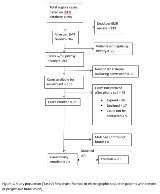Electrographic Findings During Acute Illness May Serve as Prognostic Biomarker for Epilepsy Development: A Case-Control Study
Abstract number :
3.097
Submission category :
2. Translational Research / 2C. Biomarkers
Year :
2018
Submission ID :
507527
Source :
www.aesnet.org
Presentation date :
12/3/2018 1:55:12 PM
Published date :
Nov 5, 2018, 18:00 PM
Authors :
Vineet Punia, Cleveland Clinic Foundation; Zachary Fitzgerald, Cleveland Clinic; Xiaoming Zhang, Cleveland Clinic Foundation; Huan Huynh, Cleveland Clinic; and Stephen Hantus, Cleveland Clinic Foundation
Rationale: Due to widespread and increasing use of continuous EEG (cEEG) monitoring during hospitalization, we are gathering a large amount of electrographic data during acute/critical illness. In smaller, retrospective chart review studies, we have previous shown that patients with frank epileptic or potentially epileptogenic [like lateralized periodic discharges (LPDs)] findings on cEEG are at increased risk to develop epilepsy after hospital discharge. Based on our prior work, the aim of this project was to conduct a telephonic interview based case-control study to find out if cEEG findings impact the risk of focal symptomatic epilepsy development. Methods: After IRB review, we used our prospectively maintained cEEG database from 01/01/2015 to 07/31/2016 to identify ‘cases’, defined as adult (=18 years) patients who either had electrographic seizures and/or LPDs on their cEEG. Patients with prior history or newly diagnosed epilepsy were excluded. All eligible cases were called by 2 research assistants (ZF, XZ), who were blinded to cEEG findings. After final enrollment of cases, we used cEEG database to find ‘controls’, defined as adult patients who underwent cEEG during same study period and lacked any epileptic or potential epileptogenic [LPDs, sharp waves, lateralized rhythmic delta activity(LRDA) etc] findings. The controls were matched with cases based on age (±5 years), etiology and mental status at the time of cEEG. Both cases and controls were asked two questions during phone interview: Have you had any seizures since hospital discharge? Are you on any anti-seizure medications? Clinical seizure after hospital discharge was the primary outcome. Descriptive statistical tools were used to analyze the data. Results: A flowchart of study population (cases enrollment) is shown in figure 1. A total of 75 cases were enrolled. However, 5 were excluded from analysis due to inability to find matched controls. Of the remaining 70 cases, 16 (22.9%) patients had only LPDs, 34 (48.6%) had only electrographic seizures and 20 (28.6%) had both. As seen in table 1, the cases and controls were well matched by age, mental status and etiology and were not statistically different by gender (p = 0.86). However, compared to controls, cases were more likely to be discharged on anti-epileptic drugs (AEDs) and remain on them at the end of follow-up period (p <0.001). The follow-up duration for cases was 20.6 (±4.9) months, which was significantly shorter than control (p <0.001). A total of 22 (31.4%) cases developed epilepsy during the follow-up period, compared to 3 (4.3%) controls [Odds ratio 10.2 (CI 2.9 – 36.1), p<0.001)]. Conclusions: Our study finds strong evidence that some cEEG findings, specifically electrographic seizure and/or LPDs, predispose patients to a significantly increased risk of epilepsy development, irrespective of the etiology. In fact, this increased risk among cases was noted despite being on AEDs and in a shorter follow-up period compared to controls. Our results suggest that cEEG findings at the time of acute/critical illness may serve as prognostic biomarkers for epilepsy development. Prospective, multicenter collaborative studies in future would help expand our findings. Funding: No funding was received in support of this wor.

.tmb-.jpg?Culture=en&sfvrsn=47c93635_0)